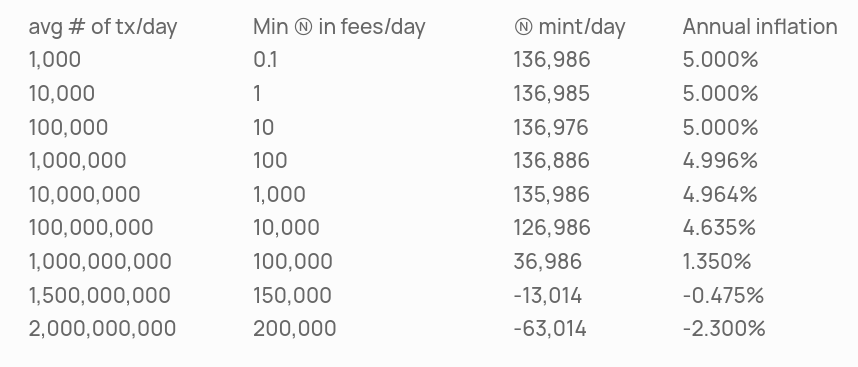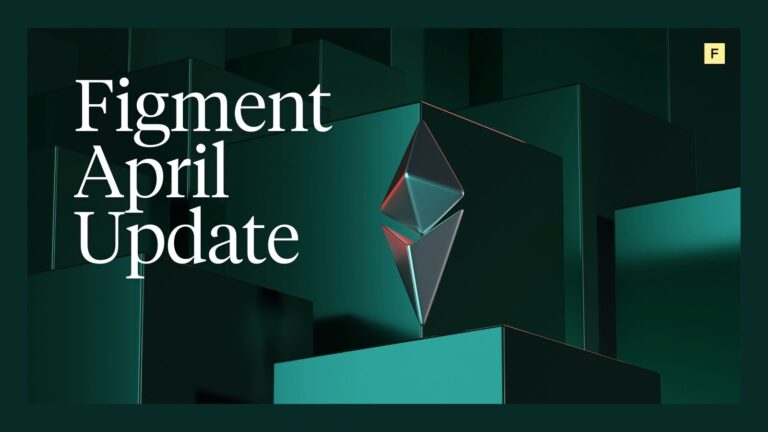Overture: The Sweet Song Of Scalability
The scalability trilemma states that there are three properties of a blockchain that form an iron triangle: scalability, security, and decentralization. Without sharding, a blockchain’s architecture can only optimize two of these properties at a time, as improving any of these properties comes at the cost of harming the effectiveness of the others.
Most layer 1 blockchains (including Bitcoin and Ethereum) optimize for security and decentralization, which hinders the number of transactions that can be processed by the network, thus harming their scalability. While Ethereum is planning to incorporate sharding in its architecture in the future to overcome the scalability trilemma, some networks already have this capability, including NEAR. This article explains how NEAR currently employs sharding to overcome the scalability trilemma and how it plans to deliver near infinite scalability to its network in the future. Let the sweet song of scalability commence!
The Ballet Of Utility: The Ballroom Of Infinities
Imagine three different ballrooms at a venue:
- Ballroom 1 can fit 100 dancers at a time
- Ballroom 2 can fit 1,000 dancers at a time
- Ballroom 3 can fit 10,000 dancers at a time
If a group of 10 dancers and a group of 1,000 dancers show up at a venue, the first group could utilize any of the ballrooms, as there is ample space in each for everyone to dance simultaneously. However, for the second group, that would only be possible in Ballrooms 2 and 3; if they used Ballroom 1, dancers in the group would have to take turns to utilize the space, as the size of the group exceeds the capacity of the ballroom.
The venue is analogous to Web 3. Ballroom 1 represents networks like Bitcoin and Ethereum, which are dominant in popularity, but have limited transactional capacity. Ballroom 2 represents networks that have the capability of processing thousands of transactions per second (like Cosmos), and Ballroom 3 represents networks that have the capability of processing tens of thousands of transactions per second (like Solana).
NEAR offers a fourth ballroom that is magical: this ballroom can accommodate a potentially infinite amount of dancers, and the room magically expands its capacity to grow in tandem with the amount of dancers.The room can also shrink back to its original size so that temporary surges of dancers can still perform, dance and use the ballroom after a surge has finished. Understanding why this is will become clear later in the article.
NEAR gives usability primacy over technological metrics like TPS or (the total number of dancers), because there’s no point having a ballroom that can accommodate 10,000 dancers if only 10 dancers show up. Therefore, user experience and general onboarding take precedence over wildly high TPS metrics which don’t reflect the actual utilization of a network.
From Aria To Duet, From Duet To Quartet: NEAR’s Sharding Roadmap
As mentioned above, the traditional solution to the scalability trilemma is a process called sharding. Typically, sharding is the partition of the databases into smaller chunks, in this case, sharding is the partitioning of distributed ledgers i.e. blockchains into smaller sub-blockchains called shards. Sharding allows blockchains to scale with adoption, remain decentralized, and not compromise security guarantees, if designed correctly.
Blockchains such as Ethereum currently require their nodes to process every single transaction. This is logically akin to every single robot in a factory of robots working on a single car until they’re finished, then every single robot tending to the next car: in other words, there’s no parallel transaction process occurring. Technologies like NEAR’s sharding ensure that other robots are free to work on lots of different cars simultaneously in a parallel work effort.
Furthermore, blockchains should be designed to autoscale by default—NEAR is one of the first blockchains to embed this philosophy into their architectural design successfully. NEAR emphasizes usability, as a high TPS without usability and the necessary network usage in the first place is likely a waste of time.
NEAR’s sharding roadmap is split into four phases starting from phase 0 and will eventually progress to phase 3.
Phase 0: Simple Nightshade—Increasing The Throughput Of The Network
Phase 1: Chunk-Only Producers—Further Decentralizing The Network
Phase 2: Nightshade—Increasing The Accessibility For Validators
Phase 3: Dynamic Resharding—Unlocking NEAR’s Infinite Scalability Superpower
I will now explain each phase in more detail.
The Notes Of Simple Nightshade: Simple Nightshade—Increasing The Throughput Of The Network
Phase 0, also known as “Simple Nightshade,” is the first of NEAR’s sharding phases. Simple Nightshade institutes the foundational bedrock of sharding allowing for dynamic resharding in the future before it iterates through the other sharding milestones. It has allowed for the state of NEAR’s blockchain to be sharded, but not the processing. In this stage, NEAR’s state was sharded into four shards which improves transaction processing speeds. Essentially it has taken NEAR from the 800–1000 TPS range to a minimum range of 2500–3000 TPS.
A Chord Of Chunks: Chunk-Only Producers—Further Decentralizing The Network
Phase 1 introduces “chunk-only producers” and we are currently in the incentivized testnet phase called Stake Wars III. Chunks are “parts of the block from a shard.” Chunk-only producers validate these shards, thus producing chunks. Each chunk-only producer only validates one shard and thus, the hardware requirements are low, especially relative to a full validator node. Chunk-only producers can validate a shard with “4-Core CPU, with 8GB of RAM, and 200 GB SSD of storage.”
The Chunks Concerto: The Consequence Of Chunks and Our Current Stage
NEAR makes learning how to be a chunk-only producer even easier by having a month-long validator bootcamp for potential chunk-only validators in partnership with the Open Shards Alliance. The chunk-only producer phase expands the validator set to between 200–400 and increases overall decentralization and network participation, whilst retaining the network security. It also increases the scope and accessibility of potential validators who might not be able to afford a full validator node can participate with lower hardware requirements.
A Nocturne For Nightshade: Nightshade—Increasing The Accessibility For Validators
Phase 2, also called Nightshade, has an expected rollout date for some time in 2023. Nightshade serves multiple functions such as:
- Validators don’t need to track all shards
- Both sharding of the state and sharding of processing is completed
- Even lower hardware requirements for validators
All of the above components are necessary to come together before the final phase plays the grand crescendo in the symphony of shards.
A Symphony Of Shards: Dynamic Resharding—Unlocking NEAR’s Infinite Scalability Superpower
The final phase, and one of the most innovative phases is Phase 3, also known as dynamic resharding. Dynamic resharding is what all of NEAR’s sharding efforts are working towards and is planned to be implemented some time in 2023. Dynamic resharding allows for additional shards to split and merge dynamically based on resource utilization.
Dynamic resharding is a form of resource optimization akin to a load balancer. Like a load balancer, dynamic ridesharing optimizes resources because transactional processing is split up and distributed across multiple shards (sub-blockchains) which are dynamically created to accommodate increased computational intensity/ TPS. When such shards operate with the requisite level of elasticity, it prevents individual shards and the network becoming congested and overloaded whilst improving overall transactional processing efficiency. This also maintains the shards availability and provides a level of redundancy. Dynamic resharding will “make NEAR almost infinitely scalable and resilient to short-term usage spikes.” according to NEAR’s article on sharding.
The Token Holders Toccata
If a shard is used more, does it earn more NEAR due to increased transactions? No, unlike static sharding mechanisms in which dApps can cause usage concentrations, NEAR is designed to dynamically redistribute the transactional load. Therefore, sharding doesn’t affect the reward or inflation structure of NEAR in any way, the inflationary issuance still remains at 5% irrespective of the new phases introduced by Nightshade Sharding, meaning that delegators and validators still get the same amount.
Burning is processes of destroying tokens so they removed from supply forever. NEAR has an approximately 5% inflation cap each year and also burns all transaction fees. This effectively means that with more network usage, comes more burned transactions and NEARs sharding roadmap implementation will likely be the prime enabling force of massively increased demand and a deflationary supply.

However, the consequences of Nightshade Sharding on NEAR are revolutionary and could transform the protocol in the medium-term by causing more dApps to flow to NEAR and simultaneously burning more NEAR tokens, decreasing supply with an increase in demand. This could culminate in a deflationary monetary policy if enough transactions occur.
Finale: Broken Bottlenecks, The Devil’s Arpeggio And Octaves Above The Rest
Scalability has been the primary bottleneck which has encumbered blockchains, specifically TPS scalability, and put a technological leash on increased adoption. But the manacles of scalability and the infamous blockchain trilemma confines us no longer due to the hard work and elegant solutions of networks like NEAR which will leave the project octaves above the rest. Emancipated from prior constraints, now is the time to unleash the power of NEAR and build dApps that bring forth the next billion user future that the founders of NEAR envision.


